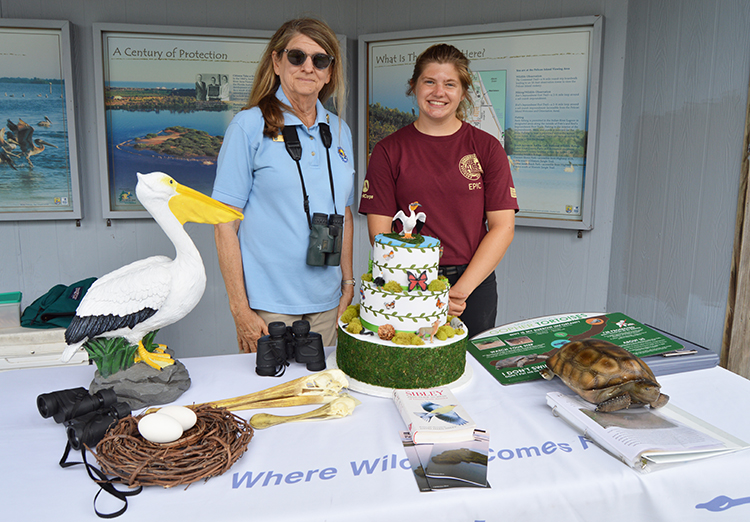The Pelican Island Conservation Society brought the birds home to roost during its annual Pelican Island Wildlife Festival, which celebrated the 119th anniversary of the founding of the Pelican Island National Wildlife Refuge. On March 14, 1903, President Theodore Roosevelt established the refuge, the first in the nation, to protect birds from being slaughtered for their plumage.
This year, the celebration took place on the section of refuge grounds open to the public.
Pelican Island itself is off-limits to visitors. While Paul Kroegel, the country’s first wildlife refuge warden, lived in Sebastian, the refuge is located on the barrier island.
“When we held the event in downtown Sebastian, people would have fun, buy a trinket, and walk away, not really knowing who we are or what the refuge is, or even where it is,” said Tim Glover, PICS board member.
“We felt it’s more important to be here, on-site. Our priority is education,” he explained.
PICS, the ‘friends’ group for the refuge, is dedicated to its care through awareness, conservation and stewardship.
On Saturday, the event featured exhibitors, historical re-enactments and a wildlife display, and on Sunday there was a pontoon boat tour around Pelican Island that left from the Environmental Learning Center.
The exhibitors each had missions that align with the conservation efforts of PICS.
“They are all folks that have something to do with the history of the refuge or are committed to doing research on the water quality issues and things in the lagoon. The refuge has expanded greatly beyond the initial island,” said Glover.
Historical re-enactor Joe Wiegand, in his role as President Theodore Roosevelt, chatted with guests about his environmental efforts as they strolled along Centennial boardwalk. The planked walkway leading to the Pelican Island Overlook chronicles the history of the nation’s wildlife refuge system.
“History is not just about the environment or people. It’s about both of them. History is a connection between them,” said Ruth Stanbridge, county historian and Indian River County Historical Society president, about the deeply rooted historical connection to Pelican Island.
“Pelican Island Audubon Society has had a close, important relationship with the refuge since the beginning,” said Richard Baker, Ph.D., PIAS president.
He said ornithologist Frank M. Chapman, an Audubon Society member, had been one of the visionary naturalists to initiate the conservation movement, which ultimately formed the refuge system.
PIAS works to preserve, protect and educate people about dwindling habitats through bird activities and research, Baker explained. He noted that we have lost 70 percent of our birds due to loss of habitat caused by wastewater, stormwater, septic tanks and sewer systems.
John Galvez of the U.S. Fish and Wildlife Service said other issues include invasive aquatic animals taking over habitats and diminishing the food supply for native species. Along with informational material, Galvez had fish tanks displaying several invasive and native fish species.
At the FAU Harbor Branch Oceanographic Institute tent, Christopher Spagnolia and Natalie Howard spoke of their ongoing research using the Indian River Lagoon Observatory Network of Environmental Sensors to monitor the health of the lagoon.
“Protecting the water is the base of all our life. It gives all the food to the manatees, the fish and the birds,” said Howard, explaining their hands-on experiments to determine salinity, temperature and water clarity.
The Pelican Island National Wildlife Refuge, located off A1A alongside the Historic Jungle Trail, is open daily to visitors from 7:30 a.m. to sunset. For more information, visit firstrefuge.org.
Photos provided

